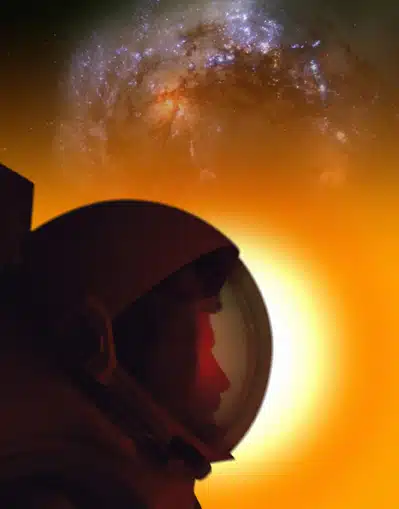Australian telescope finds missing galaxies on our doorstep. NSW astronomers have found new galaxies originally thought to be stars. They think there could be 150,000 of them in our neighbourhood.
A team of astronomers has discovered a new population of galaxies, previously mistaken for stars. Their work is helping to explain how our Universe was formed.
Dr Michael Drinkwater, leader of the team, explained the discovery at ScienceNOW! the National Science Forum in Melbourne on Thursday, 7 May
“We traditionally assumed that most of the small round objects seen in the sky were stars and that none were galaxies.
“Using a revolutionary new instrument on the Anglo-Australian Telescope, the Two degree Field, we’ve discovered that some of these objects are actually a new type of hidden galaxy. This means that the local universe contains more galaxies than we thought. We are using the Two degree Field to count how many were missed. This will lead to a better understanding of how our Universe was formed.
“So far we’ve found seven of these galaxies in a small part of the sky. We think there’s over 150,000 more waiting to be discovered.
“The amazing thing is that these new galaxies are easy to see and are not very far away, but no-one realised they were there. A bit embarrassing really. It’s only with an instrument like the Two degree Field which allowed us to check all the stars that we could find them.
The discovery, recently presented at an international conference in France, finally confirms a prediction made 20 years ago that very compact galaxies might be confused with stars.
ILLUSTRATIONS: Colour transparencies of one of the newly discovered compact galaxies and a selection of normal galaxies for comparison are available.
Background information
In pictures of the sky astronomers assume all the small round objects are nearby stars (like our Sun) in our own galaxy and that the bigger fuzzy objects are other galaxies in the distance way beyond our own galaxy. It is only with careful measurements that we can actually confirm what the objects are: until recently it would have taken far too long to check all the stars because there are so many of them. In 1997 a new facility on the Anglo-Australian Telescope at Siding Spring Observatory in NSW—the Two Degree Field—became available. This instrument allows us to measure the distance to 400 objects simultaneously, allowing us to identify all the objects in a region of sky for the first time. As a result we have discovered a new type of galaxy hidden among the stars. These were so compact that they were classified as stars in the existing sky surveys, so they represent a new class of galaxy missed in previous galaxy surveys.
The discovery of these missing galaxies will help resolve a major problem with current theories of the formation of our Universe. To understand how our Universe developed, astronomers use powerful telescopes to find the most distant galaxies possible, billions of light years away, looking back in time to see the galaxies when they were young. When we look at nearby galaxies only a few hundreds of million light years away we are not looking so far back in time to the galaxies are older. It is by comparing the young galaxies with the nearby ones that astronomers can determine the history of the Universe. But there is a problem: we see too many young galaxies in the distance to match the number of older galaxies see nearby. Either we have made a serious mistake in our theory of how the Universe develops or we aren’t counting the galaxies properly. Our new discovery means there are more nearby galaxies than we previously thought, which will help to resolve this contradiction.
Collaborators: Dr. J. Davies (University of Cardiff) Dr. M. Gregg (University of California) Dr. Q. Parker (Anglo-Australian Observatory) Dr. S. Phillipps (University of Bristol) Dr. E. Sadler (University of Sydney) Dr. R. Smith (University of Cardiff





 Fresh Science is on hold for 2022. We will be back in 2023.
Fresh Science is on hold for 2022. We will be back in 2023.